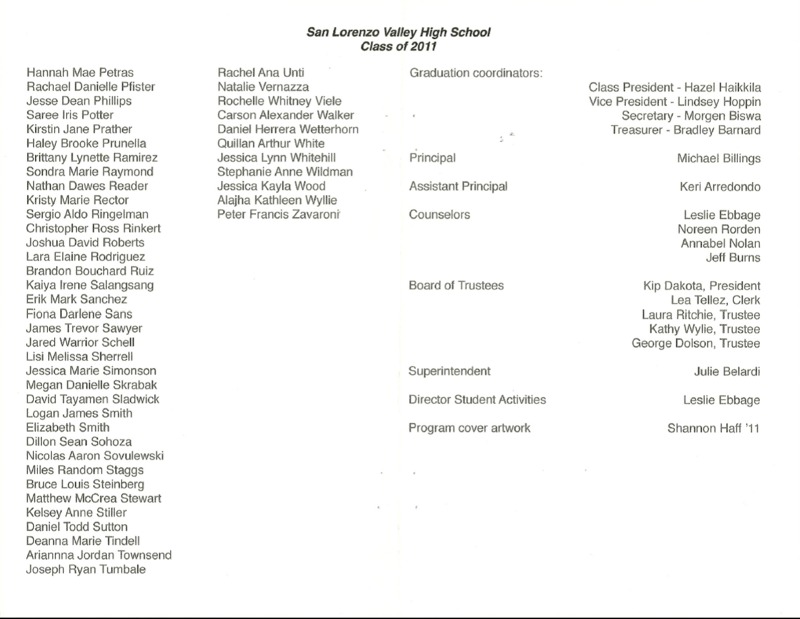High School Graduation
The SLV High School graduation started at 1:00PM. After some speeches, the principal started reading off the names of the students, alphabetically by last name. When he finishes, the graduation will end.
- Use the bulletin shown below to estimate when the graduation will end.
- Estimate how long the speeches took. How do you know?
- Write an equation that the parents could use to find the approximate time the principal will call their child’s name given the child’s position in the list in the graduation program.
- Aptos High School and Santa Cruz High School started their graduations at the same time. The graphs shown below show the time of day as a function of the number of names the principal has read at each school. Write down as many differences between the two graduations as you can based on differences in the two graphs. Give your reasons for each.



